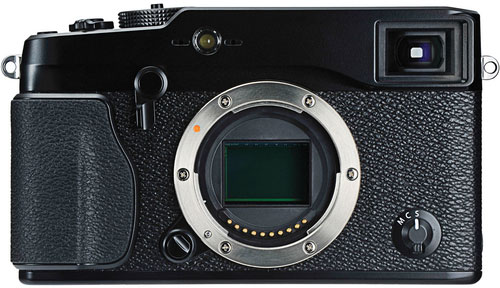Fujifilm X-Pro1 Review
In my Fuji X-Pro review, I have posted more examples with the Fuji X-Pro1 plus an autofocus error page.
Readers ask about its sibling, the X100— I continue to enjoy and use the 12MP Fuji X100, especially for photography while cycling, because the X100 fits into a jersey pocket (the X-Pro1 most definitely will not).]
Update!
After studying the way detail is rendered in a few hundred images, it is my conclusion that the “unsharp mask” sharpening algorithms in SilkyPix are ineffective at bringing out pixel-level detail and micro contrast, and the result is a coarse/chunky look at the pixel level.
The results remind me of the sharpening in Nikon Capture NX2, which has the same issues. If this hypothesis is correct, the same RAW files when run through Adobe Camera RAW might then show much improved micro contrast and detail (no ACR support as this was written).
One should also see the sensor quality and noise commentary in my review, where the X-Pro1 is outstanding.
...
It would be a mistake to read what follows lacking the context of my full review.
The Fuji X-Pro1 has some fine qualities (fundamental sensor quality looks very good), but at present it is simply too frustrating to work with its images, not one of which has anything approaching the sharpness of what should be there with a 16MP camera, particularly one without an anti-aliasing filter. I don’t know if the sharpness issue is the unusual Fuji sensor design, or poor RAW conversion with Silky Pix or poor sharpening algorithms, or something else.
Note that I don’t shoot JPEG with anything. In my review of the X-Pro1 I show how much can be lost with JPEG. RAW is what I shoot, RAW is what matters to me, and the X-Pro1 sensor clearly has far more to offer than JPEG can record, which is especially true for JPEG when one does not “nail” the exposure and white balance.
X-Pro1 RAW file support is beyond awful (Silky Pix on Mac OS X), so bad that I literally cannot read parts of the user interface. Preview speed is slow and with a curious popping/bulging effect, the UI is confusing, tedious, and inexplicably defeats the ability to work on more than one image as ACR allows, etc.
The focus speed makes the X-Pro1 unusable for non-static subjects (miss the moment, or miss the subject entirely, even relatively slow-moving ones).
While there are a few ergonomic issues that are irritating with the X-Pro1, by and large I like the camera layout quite a bit. It is a real camera.
The X-Pro1 sensor has an apparently high dynamic range and can produce very pleasing color under some conditions. And yet
RAW file support might change the situation once ACR support is in place (Adobe Camera RAW). I can always try my RAW files again when that support emerges.
This isn’t just me— a number of users have emailed to say ‘“it’s going back”. I’ll be flabbergasted if it succeeds in the market, though perhaps once RAW file support is in place and a firmware update or two passes, and with some time, the camera will gain appeal. Still, the price is high, and competition is intense in the mirror-less category.
Then there is the issue of value: the X-Pro1 with the 35/1.4 is about $2200,$2800 adding the 18/2.0 and $3400 adding the 60/2.4. Even with one lens, that is a very serious investment far and away more expensive than, say, a Nikon D3200 at about $699 with a lens (not a very good lens, but so much money is left over...). So what you’re paying for with the X-Pro1 is the form factor. I hope to do some work with the D3200 (it looks like an aggressive price point for a 24MP DSLR), and if it has some of that D800 secret sauce, then it becomes intriguing for certain purposes. With the Voigtlander 40mm f/2 pancake lens and a Zeiss 25/2.8 Distagon, the D3200 might prove interesting in the form factor area as well.
At this point, my attention will be focused on cameras I deem worthy of more attention, such as the Nikon D800/D800E, Nikon D4, Canon 1DX and Canon 5D Mark III.
Gunnar P writes:
Excellent review of the X1Pro. All the other reviews basically say “Some quirks but great camera”, (and fujirumors.com site tends to pick on the ‘best’ reviews, and some even say “focus is so fast it even works for my kids”) but I cannot but wonder under what conditions these verdicts where achieved. In real life, your view seems much more applicable. The “early termination” hopefully sends a strong message to Fuji to accelerate some fixes – hopefully they read your site!!!
I completely agree with your assessment – the performance (focus, sharpness) is very variable, and this inconsistency makes it hard to use. It’s hit or miss on certain targets. The greatest oddity to me is that x100 focuses now faster than x1pro. Fuji, really? The AF is not just a speed issue, that might be acceptable at least for landscape photography, it’s the fact that focus is OFF on random pictures, sometimes hugely so (portraits become backgrounds…) and sometimes very subtly so, suggesting camera is not sharp.
I did however find camera is capable of producing very sharp pictures, but this happens only half of the time or so when focus is truly on. I also found that use of EVF indeed improves results over OVF (no idea why), and that landscape shots work better than people shots (people move). Also the 35mm lens is sharper, if focus is good, than what x100 produces.
I had fewer issues with white balance; however I had real issues with overexposure to a point where a bunch of photos where completely unusable.
I also agree that the RAW solution is a nightmare for any raw shooter because the vast majority is now required to change workflow. What a pain.
I can only hope that Fuji will address issues with Firmware (can this be fixed in Firmware? Who knows). The layout/concept of the camera is otherwise good.
DIGLLOYD: I suppose a combination of focus and lens could produce oddly unsharp images, but this doesn't explain the consistent lack of detail at infinity shots. I shoot many more than I publish to form the basis for my conclusions. The sharpness is strikingly weak in context of the Leica M9, which has similar resolution. But it is possible that the raw converter is the issue (Silky Pix).
White balance is an odd one; daylight images with good color to those with strongly cyan casts. Yet my initial batch of photos were likeable enough.
What I found in converting from RAW is that the images are not really overexposed in RAW in the sense of “expose to the right”, and virtually all of them retain the highlight detail, even though the +0 development blows out highlights badly. So in this sense it is not overexposure at all and the X-Pro1 has done exactly what is ideal. But converting to JPEG on that basis is a disaster.
David G writes:
Hi, first I want to state that I think that your reviews are of the highest quality on the net today. You are the reason I have invested in Zeiss equipment when I first started in photography one year ago today.
I was the very first person to acquire an Xpro1 in Louisiana and have put it through its paces day in and day out over the last 3 weeks. I sometimes took photo's for 8 to 10 hours at a time for 3 days straight. Everything that you have stated has been true, it is a beast to tame and one that I am almost sad that I have put so much time into.
On that point, I have now gotten incredibly good at taking photo's with this camera. Some of the photo's are incredible and have exceeded my expectations. Do they go against my D4, no but I will say for a camera to take with you on certain situations it is a great choice. I think that considering all of the exciting new DSLR's on the market from Canon and Nikon (Soon Sony), that I would rather see reviews on your site on those camera's anyway. Would an M9 be a better choice, yes. But not everyone has lots of $$ hanging around. My M9 is wonderful and I use it like our china, only going out at certain times.
... I think this camera can be tamed. I think that some one who is very interested in learning every aspect of this camera can get very good at using it. Will firmware correct some of the issues with this camera, yes! Will it be perfect, no. I love my Leica, I take it out and use it every so often, am I very good at using it, no. Do I always get the shot, no. The Fuji x pro 1 is not going to be a Leica and will not be great camera till they have a few firm updates and raw converter update. The one thing I do see, is that if enough time is spent with this camera it will yield great results.
DIGLLOYD: I agree that the sensor has potential, that ACR support and time (firmware) might solve most of the issues well enough. Gunnar’s experience report does not address my sharpness concerns, and I have yet to see a sharp X-Pro1 image from my own shooting or anyone else (I’d want to see a RAW file of course).
Every camera with an APS-C sensor or larger can produce excellent results under some conditions. The X-Pro 1 produced lovely results on my first batch of images, but under outdoor conditions, the images drove me crazy trying to produce acceptable results with white balance, and the sharpness limitations remain baffling. I shot both the 35/1.4 and the 18/2. The X-Pro1 does seem to have some trouble with a polarizer (used on the 35/1.4), but my B+W MRC polarizer is the highest quality and neutral according to my color meter, so I’m also puzzled by that.
Howard D writes:
I took some sample images and had the same problems that you encountered with the X-Pro1. Fortunately, I borrowed a store camera and took the images home on my memory card. Everything you say is correct from what I observed. I own an X100 and was looking forward to the Pro thinking it be a better version. What a disappointment.
DIGLLOYD: I also own the Fuji X100 (see my review of the Fujifilm X100), and can develop sharp images without difficulty. Since the X100 has an anti-aliasing filter and the X-Pro1 does not have anti-aliasing (blur) filter, the X-Pro1 should inherently be much sharper, having 1/3 more megapixels and no blur filer.
Myron W writes:
I have the Fuji X100. Do you feel the same way about the X100 as you do the XPro?
DIGLLOYD: I continue to use my Fuji X100 successfully.
The X-Pro1 thing is not a feeling so much as an experience report— I’m not getting anywhere near the sharpness that ought to be there even with aggressive sharpening. And it’s way too much work to deal with a batch of images in Silky Pix. Sshooting JPEG is not a solution (throw away the quality of the sensor), and problematic given tendency of the camera to “overexpose” (see comments in one of the previous items above).






























